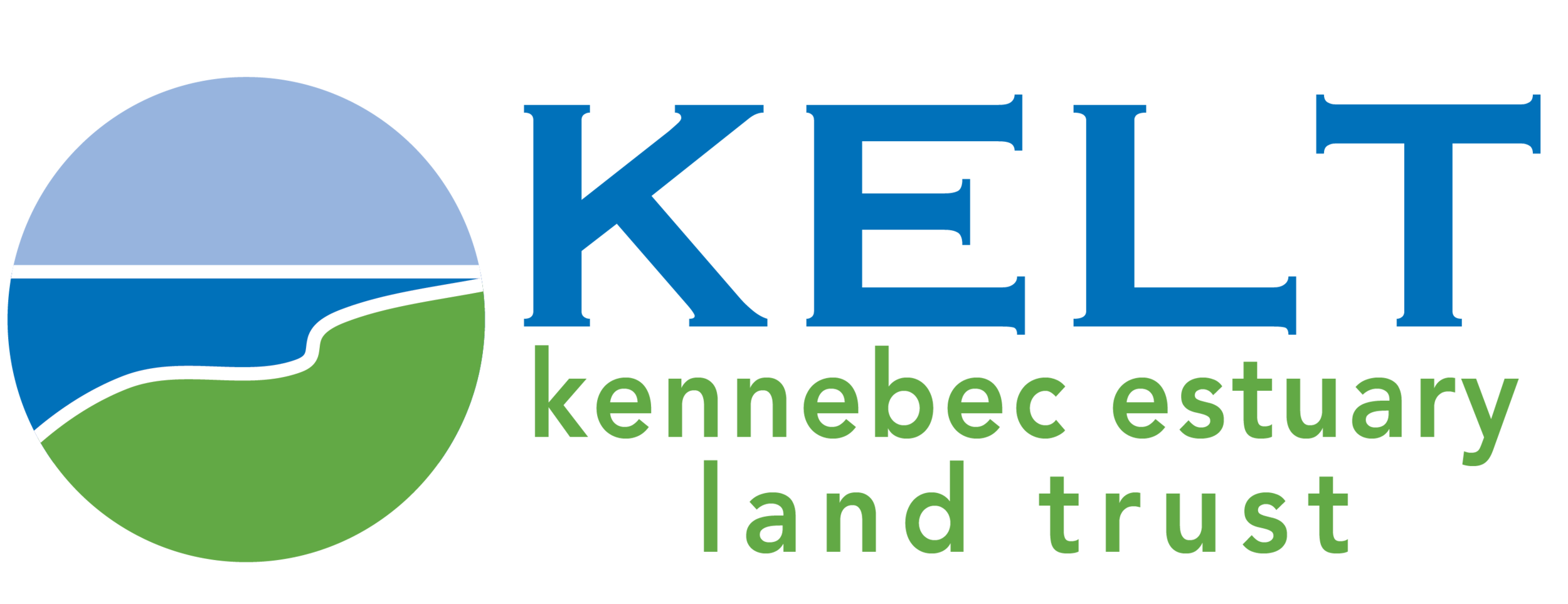Sewall Woods Preserve Demonstration Forest
In donating this property to KELT, William Sewall wished that the land continue to serve as a working forest, building on his own tradition of harvesting in his woods. The harvest honors William Sewall’s wish while also making improvements to forest health and wildlife habitats.
Folks joined KELT staff to learn about the cut-to-length harvester used during the sustainable timber harvest.
During spring 2017, KELT conducted a timber harvest at Sewall Woods Preserve as part of a larger demonstration forest project to showcase sustainable forestry practices to the public.
Barrie Brusila, a licensed forester from Warren, Maine, has written a forest management plan and provided guidance to the logging team throughout the harvest. Due to its history of use prior to KELT ownership, many areas of the forest lacked tree diversity or contained crowded stands with diseased and stunted trees.
Barrie’s management plan for Sewall Woods seeked to address these issues through a marked wood selection harvest on approximately 60 acres, meaning all trees marked by Barrie with spray paint have been removed- about every third tree from the harvest area on average.
See the Stand Map to the right. This stand map shows the areas covered by the different forest types found at Sewall Woods Preserve (numbers) and the associated management recommendations. While stands 1 and 3 are designated for a marked wood selection harvest, other stands will not be harvested out of a desire to retain shoreline trees, avoid soil damage in wet areas, or allow stand development.
The Stand Map: Click HERE to view a PDF of the map
Folks visit a 'patch cut'. These areas increase the diversity of habitats found in the preserve and benefit wildlife, including a variety of birds!
The harvest will allow more light to reach the ground, spurring the growth of new forest and creating space for a greater diversity of tree and wildlife species. Patch cuts were completed on several ¼ to ½ acre zones where all trees were removed to create shrub habitat, as well as openings for logging roads and a logging yard.
The immediate aftermath of a harvest may look messy, but the forest will rebound in a healthier state over time.
Barrie’s plan was also crafted to reduce the impact of the harvest on soils and water as much as possible. Wetlands and steep hillsides will be avoided to prevent erosion. She will work with two loggers, Gavin McClain and Kyle Overlock of CTL Land Management Services, who are known for following environmentally-sound practices, and who use a “cut-to-length” method that is designed to minimize ground disturbance.
Staff and volunteers work to build brush piles…great habitat for small mammals, amphibians, and birds!
KELT hopes that this harvest will not only benefit the woodlands and wildlife of the preserve, but will also provide a unique experience for its many users, encouraging the spread of sound forest stewardship practices throughout our region.
KELT welcomes your questions about the project– contact us at 207-442-8400, or email info@kennebecestuary.org.





